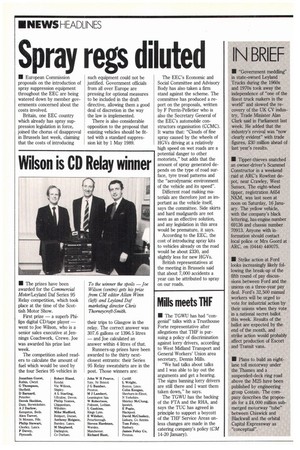Spray regs diluted
Page 8

If you've noticed an error in this article please click here to report it so we can fix it.
• European Commission proposals on the introduction of spray suppression equipment throughout the EEC are being watered down by member governments concerned about the costs involved.
Britain, one EEC country which already has spray suppression legislation in force, joined the chorus of disapproval in Brussels last week, claiming that the costs of introducing such equipment could not be justified. Government officials from all over Europe are pressing for optional measures to be included in the draft directive, allowing them a good deal of discretion in the way the law is implemented.
There is also considerable opposition to the proposal that existing vehicles should be fitted with a standard suppression kit by 1 May 1989. The EEC's Economic and Social Committee and Advisory Body has also taken a firm stand against the scheme. The committee has produced a report on the proposals, written by F Perrin-Pelletier who is also the Secretary General of the EEC's automobile constructors organisation (CCMC). It warns that: "Clouds of fine spray caused by the wheels of HGVs driving at a relatively high speed on wet roads are a potential danger to other motorists," but adds that the amount of spray generated depends on the type of road surface, tyre tread patterns and the "aerodynamic environment of the vehicle and its speed".
Different road making materials are therefore just as important as the vehicle itself, says the committee. Side skirts and hard mudguards are not seen as an effective solution, and any legislation in this area would be premature, it says.
According to the EEC, the cost of introducing spray kits to vehicles already on the road would be about 2330, and slightly less for new HGVs.
British representatives at the meeting in Brussels said that about 7,000 accidents a year can be attributed to spray on our roads.




















































































































